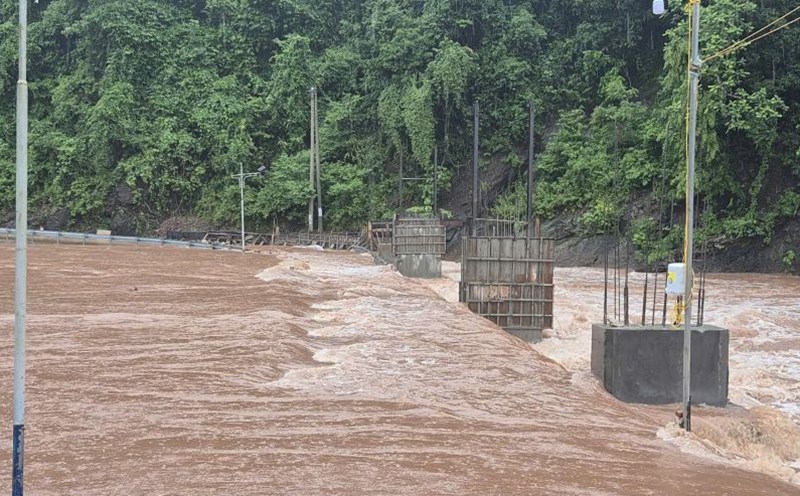The dispatch sent to the People's Committees of provinces and cities in the Northern and coastal regions from Quang Ninh to Khanh Hoa and ministries and branches stated:
From the evening of August 29 to August 31, the area from Thanh Hoa to Hue city is likely to experience heavy rain with a total common rainfall of 150-350mm, locally over 600mm; the midlands, Northern Delta and Da Nang city will have common rain of 70-150mm, locally very heavy rain over 300mm.
To proactively respond to the tropical depression that has strengthened into a storm and heavy rain, with the risk of floods, inundation, flash floods, and landslides in the coming days, the Minister of Agriculture and Environment recommends that ministries, branches, and People's Committees of provinces and cities in the Northern and coastal areas from Quang Ninh to Khanh Hoa:
1. For the sea route from Quang Ninh to Khanh Hoa:
- Closely monitor the developments of the tropical depression/storm; strictly manage vehicles going out to sea; organize counting, notify owners of vehicles, captains of ships and boats operating at sea of the location, direction of movement and developments of the tropical depression/storm to proactively avoid, escape, do not move into dangerous areas or return to safe shelters. Dangerous area in the next 24 hours: From 15.0-18.0 degrees North latitude; 107.5-115.0 degrees East longitude (dangerous area adjusted in forecast bulletins);
- Deploy the work of ensuring the safety of people, vehicles, and property, especially for tourist destinations, aquaculture, fishing, seafood, and works at sea, on islands, and coastal areas;
- Based on specific situations, proactively decide to ban fishing vessels, transport vessels, tourist vessels and evacuate people in cages and aquaculture hutes along the coast, at sea and on islands to ensure safety;
- Prepare forces and means for rescue when required.
2. For the mainland of the Northern region and provinces and cities from Thanh Hoa to Da Nang:
a) For the plains:
- Review and be ready to evacuate people from unsafe houses, areas at risk of deep flooding, river mouths, and coastal areas;
- Proactively drain buffer water, prevent flooding to protect agricultural production, industrial parks at risk of flooding;
- Deploy flood prevention plans to ensure smooth traffic for urban areas, especially during the time of the country's important events celebrating the 80th anniversary of the August Revolution and National Day on September 2 in Hanoi;
- Deploy response plans, ensure dyke safety, especially on damaged routes; organize inspections, reviews, and take measures to ensure the safety of telecommunication systems and power grid systems to maintain operation, without interruption before, during and after the tropical depression/storm;
- Proactively, take advantage of the organization of harvesting agricultural products and aquaculture areas according to the motto "greener at home than in the fields".
b) For mountainous areas:
- Deploy shock forces to inspect and review residential areas along rivers, streams, low-lying areas, areas at risk of flooding, flash floods, and landslides to proactively clear the flow of blocked and congested areas; organize the relocation and evacuation of people to safe places; direct commune-level authorities to notify each household living in areas at risk of landslides and flash floods to inspect and review around their residence to promptly detect unusual and dangerous signs to proactively evacuate from dangerous areas;
- Prepare plans to organize forces to guard, control, support, and guide to ensure safe traffic for people and vehicles, especially in culverts, spillways, areas with deep flooding, fast-flowing water, areas where landslides have occurred or are at risk of landslides; resolutely not allowing people and vehicles to pass if safety is not guaranteed; arrange forces, materials, and means to overcome incidents, ensuring smooth traffic on main traffic routes when landslides occur;
- Inspect, review, and implement measures to ensure the safety of vulnerable works, works under construction, tunnel areas, and mineral exploitation, especially small hydroelectric reservoirs, small irrigation reservoirs, and vulnerable lakes; arrange standing forces to operate and regulate reservoirs and be ready to handle possible situations.











